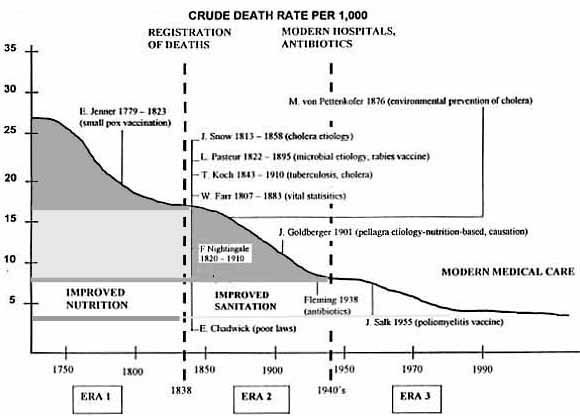|
Job and His Wife |
|
|
Job and His Wife |
|
ADVANCES in public health had already begun in the mid-nineteenth century
|
|
|
OTHERWISE well-known for his work on obstetrical anesthesia, Dr. Snow, was able to determine the cause of a horrific outbreak of cholera in the Soho district of West London that began on August 31, 1854: overnight, within a radius of a few blocks, doctors reported 56 new cholera cases. By the next evening there were 143, and the death toll had reached 70 and was climbing.
Snow analyzed the new cases on a map and determined that a public water pump, the Broad Street Pump, was the center of the outbreak. He had the pump handle removed, and the outbreak ceased. Water pumped to that location from the Thames river had been contaminated by sewage.
 |
Investigators such as John and Sonya McKinlay and Thomas McKeown have emphasized that the primary determinants of change in mortality rates over the past two centuries included:
A. Improvement in the nutritional status of the population
B. Improvements in living environment and non-medical technology
C. Impact of the hygiene and public health measures (such as improving water quality and sewage disposal)
D. Demographic changes - (reduction in overcrowding)
E. Changes in the biological organism causing the disease (i.e.: changes in the organisms influence transmission and zero mortality rates)
Public health measure aimed at widespread public hygeine significantly reduced infant mortality and epidemic disease. Medicine became increasingly “Paternalistic” especially as effective antimicrobial drugs were discovered. It was taken for granted that
“YOU CAN ALWAYS TRUST YOUR DOCTOR!”
This Webpage was created for a workshop held at Saint Andrew's Abbey, Valyermo, California in 1990